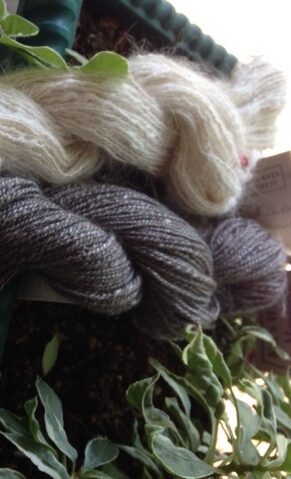Your cart is currently empty!

Why Don’t You Have a Website?
The town where I live has a truly wonderful farmers market, where you can not just buy local peaches and peppers but also hear a brass band, a banjo picker, a string quartet, a couple of folk singers, and a tuba soloist during your turn around the square.
This week I bought some handspun yarn and the artist who made it explained to me — with no prompting on my part — why she doesn’t have a website.
I understand why she felt moved to do that, actually. There I was buying multiple skeins of handpsun angora and yak/silk mix, asking about yardage and where she sourced her alpaca. She can tell a potential repeat customer when she sees one. She pointed out her name and number on the business card she gave me and said she would be happy to do a little casual mail order for me.
I didn’t even so much as ask whether she had a website. My writing classes have done research on why local small businesses don’t have websites, and I have my own theories about local artists. But she probably often has people ask her, so she launched into her reasons for doing without a website:
- “I have dial up.” People in rural Arkansas often have dial up rather than faster internet services, but that doesn’t mean that her customers in town… in the town where she actually sells her stuff, for example… don’t use the internet. She may not realize that people don’t usually host their own websites, but the truth is that her personal internet habits are not relevant to her business.
- “Yarn is such a hands-on purchase.” Yes, it certainly is. People who have never seen yarn before might be at a loss when buying yarn online. However, websites like Knitpicks do a brisk business among knitters, and she might be able to do the same. Good photos and descriptions plus information on fiber content would probably do the trick.
- “Pictures wouldn’t really do justice to the yarn.” The solution to this, of course, is to hire a photographer. Yarn is quite photogenic. Even counting the cost of a professional photographer, the price of a website would be far less that the price of a physical storefront.
- “I wouldn’t want people to be disappointed.” It’s yarn. Ask anyone for a list of the major disappointments in his or her life, and yarn will not be on the list. What’s more, people who have bought yarn from this spinner, like it, and want more can’t easily order it online — and that’s pretty disappointing.
- “You can call me and I’ll be happy to send you some more.” She’ll even be happy to make me just what I want, which is quite nice of her. But it’s very limiting for her business. Especially considering the price of her yarn, which is a bit pricey for a farmers market, she probably could reach a lot more of the market for luxury yarn online than she can with casual back-fence arrangements.
I still keep writing about businesses without websites not just because I keep meeting business people without websites but also because studies, including the U.S. Census, keep confirming that roughly half of small businesses do not have websites.
People, it’s the 21st century. Having a nation in which half the small businesses (and that’s half the companies earning less than $1,000,000 per year, not half the hand spinners) have no websites is like having a nation in which half the adults can’t read. You can get a website of some kind for almost nothing — Google will help you. Contact me and I’ll help you. Let’s see if we can’t do something to improve this statistic before the next census.
by
Tags:

Leave a Reply